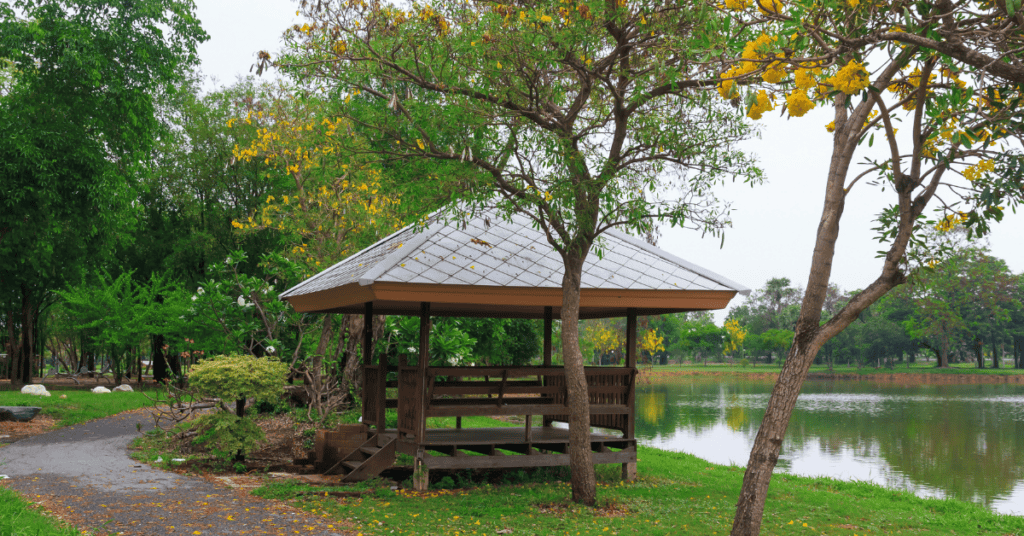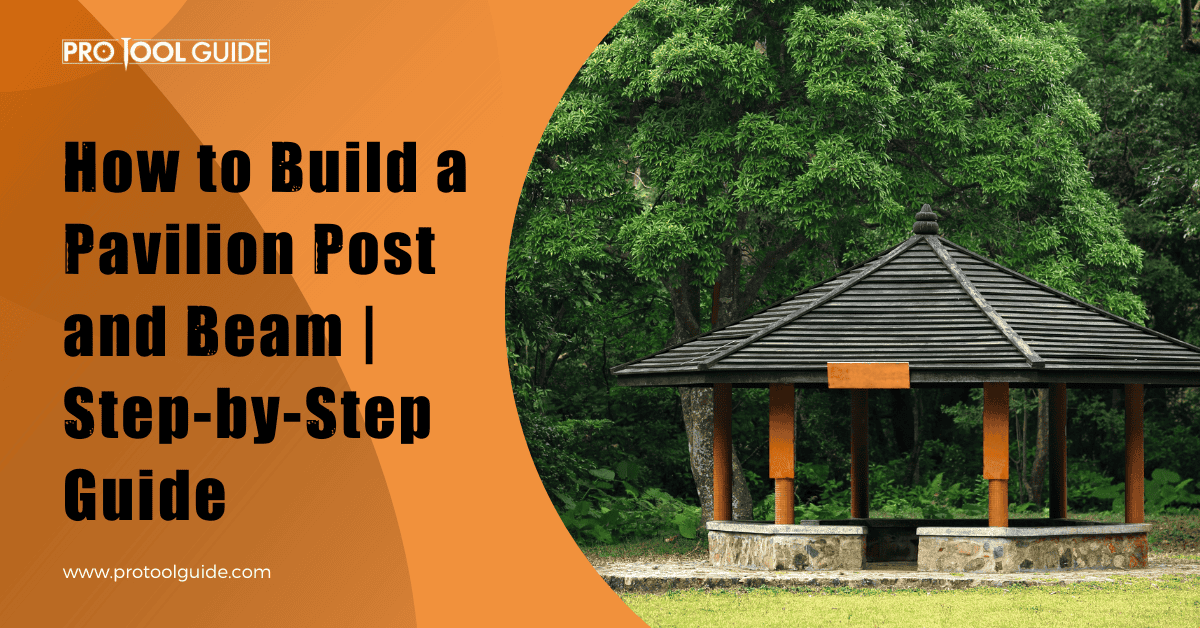Summers are finally setting in, and it is time for some outdoor activities. An uncovered patio, however, could get hot and spoil the real fun.
Pavilions, also known as gazebos, are open-sided free-standing structures. Typically these are octagonal, but you are free to design them the way it pleases you.
Latticed roofs allow a portion of the sunlight to pass through. If you wish to use the pavilion throughout the year, covered roofs are a better design.
Pavilions are a great addition to your garden. But you do not have to invest a lot of money to install one. Just follow this article that guides you on the steps on how to build a pavilion.
Get Started with the Outdoor Pavilion Built

Ensure that you calculate the pavilion size to suit your requirements and place it in a flat area.
The guide takes you through the steps of building a post and a beam to erect a closed structure to use as a cooking zone or a place to sit and chat with friends.
Decide on the pavilion size depending on your needs. Make sure that you measure the dimensions well to avoid rework and wastage.
Tools and Materials
- Shovel
- Level
- Wheelbarrow
- Trowel
- Measuring tape
- Chalk line
- Hammer
- Framing square
- Handsaw
- Utility knife
- Chain saw
- Socket wrench
- Spike nails
- Hacksaw
- Circular saw
- Treated timber
- Wood stakes
- Plywood
- Concrete
- Patio pavers
- Sand
- Steel angle
- Cedar post
- Cedar beam
- Cedar stringer
- Nuts
- Washer
- Lag screws
- Hip rafters
- Jack rafters
- Common rafters
How to Build a Pavilion Post and Beam?

1. Marking the Area
Use a marking paint and draw the desired area on which you wish to build the pavilion. You will have to spike the timbers, so keep the site a little larger than the patio. Dig the turf to a 5-1/2 inch depth. If there are any low sides, then level the area with extra timbers.
2. Use Spike Nails
Use inch spike nails to connect the timber at every corner. First, build the exterior perimeters and then proceed to the inner side.
3. Introduce Concrete
Pour concrete into the form and smoothen out the surface. Then screw the pier form to the timber. Again pour concrete on the pier form. Do this step when the inside area of the timber frame is leveled. The concrete underneath and the concrete in the pier will have to bond, so you must do this process with vigor. You need to be especially quick if working on a hot and dry day.
4. Smoothening the concrete
Smoothen the concrete and push it 2-1/4 inch below the top of the timber on the insides of the timber frame. You will have to put a sand layer on the hardened concrete later to level the paver, so it is okay if the surface is not exactly smooth.
5. Introduce Pier
Place the pier form on every corner while the concrete is still moist. Then, put the concrete mixture on the structure and smoothen it with a trowel.
6. Introduce Patio
The concrete will be hard the next day, ready for you to lay the patio pavers on. First, make a screed using a notch that is cut to the same thickness to match the paver. Pour sand and pull out the screed board to even out the sand on the concrete. It is now time to place the pavers. You can select any color or customize the pattern as per your choice.
7. Usage of sand
You may still have to level some of the patio stone corners. Just lift the paver and remove or add sand as you wish to.
Spread a thin layer of sand on the concrete and place the patio stones on it. You may need some sand to level the stone with the timber top.
8. Adjust the Edges of Post
Trace around the end cuts of the post and outline the post location. The outer edge of the inner post should adjust well so that it adapts with the beams above. This is a crucial step to align the roof frame. The inner and the outer column should have at least a 3-inch space.
9. Drilling
Drill into the concrete pier. Here is where you will fasten the steel brackets.
Drill 9-1/6 inch holes in the post support. File the sharp edges and use a mineral spirit to clean the metal. Purchase paint and spray at least two coats on the support to prevent it from rusting.
10. Drill Pilot Holes
We have used cedar to build the posts. Cut the cedar to the desired length and lay the cut-off ends on the steel support. You will need help here to hold each post against the steel support. Drill pilot holes through the support right through the post to fit in the lag screws and then tighten the lag screws with a wrench.
11. Clamp the Beams
Clamp the beams to the post and fasten them. Secure the beams with bolts made with a 1/2inch threaded rod.
12. Insert Notched Stringers
Place the notched stringers in between the beams. You will need nails to hold them in place. Just drill them and insert them in the lag screws.
The interior stringers give support when the roof starts to push out from the beam.
13. Adjust the Beam
Set the hip rafter on the beam. The hips must fall where the beams intersect. Next, nail the hip rafter and the beam to the jack rafter. Then fix the decking into the rafter.
14. Staple the roofing
Staple the roofing over the decking. Staggering the roof beams gives it a hand-built appeal. Finish off one side and trim the shingles.
A deck sealer helps to seal the pavilion entirely. It will not let the post, beams, and shingles crack under the sun. Inspect the nuts, bolts, and lag screws periodically. The wood shrinks when dry, and this could ask for some tightening after a few months, so ensure that you keep a check.
15. Beautify the Pavilion
You are now free to beautify the pavilion as you desire. Decorate it and enjoy spending valuable time with friends and family in your DIY pavilion with posts and beams.
Conclusion
With our step-by-step guide on how to build a pavilion, it should not take over a few days to get your pavilion ready.
Do not let the weather elements spoil your plans anymore. Be it the rains or the scorching sun; there is no need to limit your outdoor time when you have the pavilion ready.
You May Also Like To Read:

